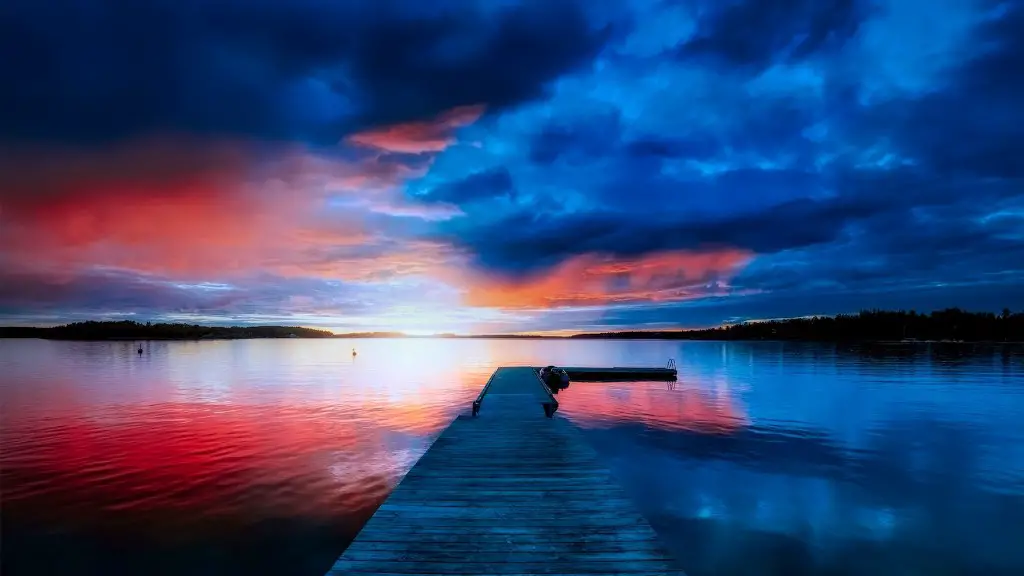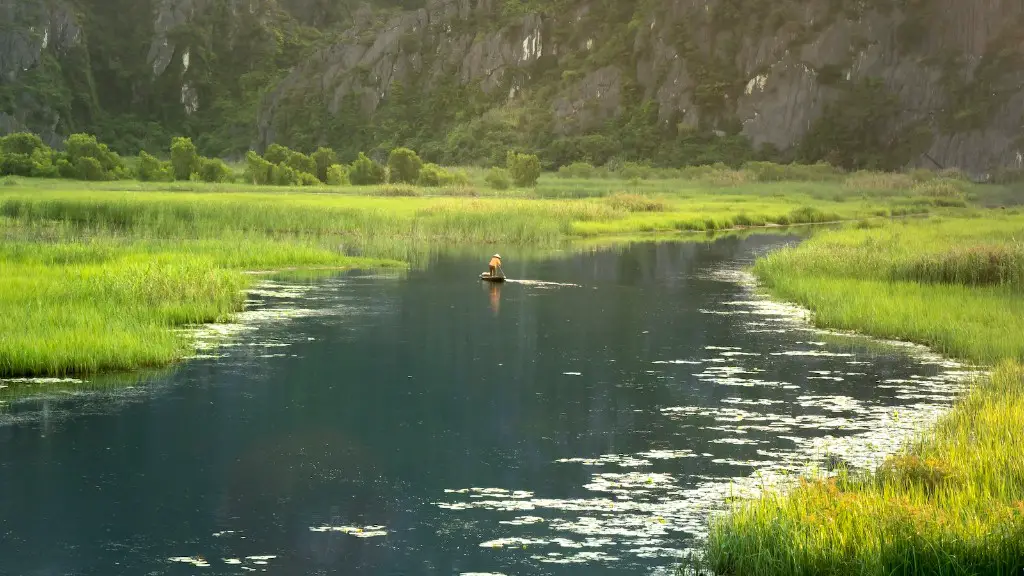The Amazon river is the world’s largest river by discharge volume of water, and it is located in South America. The river basin has an area of approximately 7 million square kilometers, and it is home to the world’s largest rainforest. The river is approximately 6400 kilometers long, and it runs through the countries of Brazil, Peru, Colombia, and Venezuela. The river is an important source of water for the people who live in the basin, and it is also a popular tourist destination. The river is known for its flooded forest during the wet season, and it is a common occurrence for the river to flood after a big rain.
The Amazon River is the world’s largest river by volume of water discharged, and it floods every year during the wet season. The rains typically start in late October or early November and last until June or early July.
What happens to the Amazon river after a big rain?
The increased rainfall in the Amazon Basin results in an increase in discharge of the rivers. Because the basin is mostly flat and there is more water than the waterways can contain, the water spills outside the riverbanks and into the low-lying floodplains. This can cause problems for people living in these areas, as well as for the animals and plants that call the floodplains home.
The Amazon River is the longest river in the world and it floods once per year. The timing of the flooding varies from one region to another as the seasonal rains work their way north. Flooding in some areas can start as early as November and in other areas, the flooding will continue to rise until June.
Has the Amazon river ever flooded
The Amazon basin has seen an increase in extreme flood events over the past ten years. This includes the two biggest flood events in 2012 and 2021. The cause of this increase is not fully understood, but it is likely due to a combination of factors, including climate change, deforestation, and changes in land use. These floods have had a devastating impact on the region, causing widespread damage and loss of life.
The Amazon region has been affected by severe climate extremes in recent years, with droughts in 2005, 2010, and 2016, and floods in 2009, 2012, and 2014. These changes in climate can have a significant impact on the ecosystem and the people living in the region.
What is the biggest threat to the Amazon river?
The world’s wilderness areas are essential to the health of our planet and the future of humanity. They are home to some of the last remaining intact ecosystems on Earth and are vital to the survival of many plant and animal species. Unfortunately, these areas are under increasing threat from huge-scale farming and ranching, infrastructure and urban development, unsustainable logging, mining and climate change.
We must do everything we can to protect these wild places. We need to promote sustainable management of natural resources, support conservation efforts, and educate people about the importance of wilderness areas. Only by working together can we hope to preserve these areas for future generations.
Climate change appears to be increasing the frequency and severity of both droughts and floods in different parts of the world. In the Amazon Basin, climate change appears to be causing more frequent and more severe droughts. This is having a devastating impact on the local environment and the people who live there. The droughts are causing wildfires and destroying crops, which is leading to food shortages and economic hardship for the people who rely on the Amazon for their livelihoods.
How wide can the Amazon river get during heavy rains?
The Amazon River is the largest river in the world by discharge volume and it is located in South America. The river has a very wide range in width, depending on the season. During the dry season, the width of the river averages 2 to 6 miles (32 to 96 km). However, during the wet season, the width of the river can reach up to 30 miles (48 kilometers). This makes the Amazon River one of the most impressive natural features on the planet.
The Amazon River is one of the longest rivers in the world and flows through the Amazon rainforest. The majority of the river has a depth of around 20 to 50 meters (66 to 164 ft), but there are some deep points where the depth plunges to around 100 meters (330 ft). The Amazon River is a vital source of water for the rainforest and its many inhabitants.
How much rain does the Amazon get a year in inches
The Amazon rainforest is one of the wettest places on Earth, receiving between 80 and 430 inches of rainfall per year. This high level of rainfall, combined with hot temperatures, creates a wet, tropical environment that is home to a wide variety of plant and animal life.
The Amazon River’s water is not safe for humans to drink, as it is far too muddy and has too many biological components; a person who drank this water would likely get sick.
Why is the Amazon river so brown?
The Amazon River is the largest river in the world by discharge and is responsible for roughly 20% of the Earth’s freshwater discharge into the oceans. Sediment from the Amazon River provides essential nutrients to the ocean’s ecosystem and helps to maintain a healthy balance in the oceans.
The full trip will take roughly 8 days downstream and 14 days upstream, though adding at least 2 or 3 days buffer is recommended to allow for delays and missed connections. You can also cut the journey short by starting somewhere in between or by doing some legs by plane.
How far did Amazon swim down
On Sunday, April 8, 2007, 52-year old Martin Strel completed the first-ever swim of the 3,274-mile-long Amazon River. This amazing feat took Strel a total of 66 days to complete, during which he faced many challenges including strong currents, dangerous wildlife, and extreme weather conditions. Nevertheless, Strel persevered and accomplished an incredible accomplishment that is sure to inspire others.
The world’s largest river system is being rapidly degraded by dams, mining, overfishing, and deforestation, warns a study published last week by an international team of scientists. This degradation is putting the river system at risk of collapse, which would have devastating consequences for the planet. The study recommends urgent action to protect the river system and its many benefits to humanity.
How many rivers are empty in the Amazon river?
The Amazon River is indeed one of the longest rivers in the world. But it should be noted that its length is due in part to the many tributaries that flow into it. These tributaries originate in several different countries, including Ecuador, Bolivia, Colombia, and Venezuela. So while the Amazon River may be mostly located in Brazil, it can rightfully be said that it also flows through other countries in South America.
With so many different types of swimming spots, the Amazon is a great place to go for a swim. Whether you’re looking for a place to relax and soak up the sun, or you’re looking for a more adventurous swim, the Amazon has something for everyone.
What is a feared fish of the Amazon river
The red piranha is a species of fish that is widely distributed and abundant in the Amazon rivers. At a respectable length of 35 cm, it is not a danger to swimmers unless water levels and food supplies are low. In that case, it is advisable to stay away from them.
The loss of forest cover in the Brazilian Amazon is estimated to be 809% of the 1970 cover by the year 2020. This remaining forest cover is critical to the ecosystem of the Amazon and the world.
Conclusion
The answer to this question is somewhat complex and dependent on a few different factors. In general, the Amazon River is subject to seasonal floods and droughts, and so heavy rains can certainly cause the river to flood. However, the size and scope of these floods varies greatly and is difficult to predict. Additionally, deforestation in the Amazon basin has led to increased flooding in recent years, as there is less trees and vegetation to absorb excess water.
The Amazon River can flood after a big rain, but it does not always flood. Flooding can depend on the amount of rain, the time of year, and the geography of the land.





